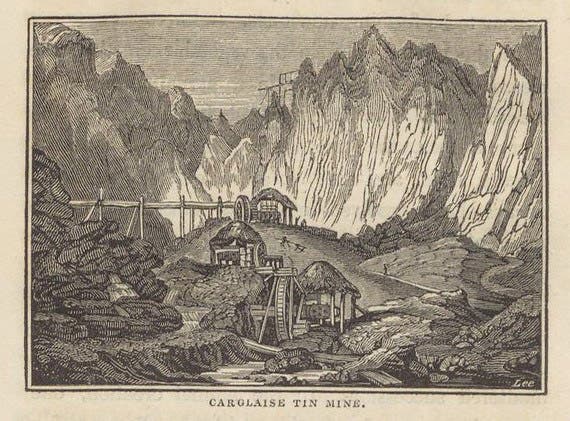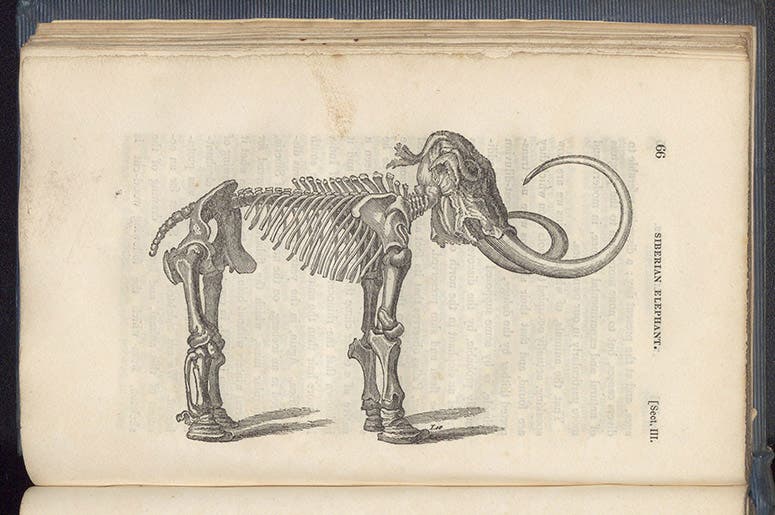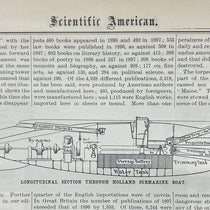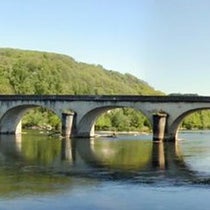Scientist of the Day - William Brande
William Thomas Brande, an English chemist and geologist, was born Jan. 11, 1788. He started out as an apothecary and essentially taught himself chemistry, but he must have been a good teacher (and student), as he succeeded Humphrey Davy as professor of chemistry at the Royal Institution in London in 1813. He is best known as the first to isolate the element lithium in 1821. He wrote a popular textbook, A Manual of Chemistry, of which we have three editions in our collecttions. His lectures at the Royal Institution were quite popular, and he delivered the famous annual Christmas lectures no less than 7 times. He was also one of those responsible for attracting young Michael Faraday to chemistry.
That said, today we are going to discuss Brande’s geological textbook, Outlines of Geology, first published in 1817. The book grew out of lectures he gave at the Royal Institution the previous year. We have the first edition and an enlarged edition of 1829 in our collections. The enlargement has added illustrations, many of which are headpieces that introduce the different sections on sedimentary rocks, igneous rocks, minerals and metals, etc. We have discussed and shown headpieces in previous posts, most recently that on Pierre Varignon. But headpieces in geological works are scarce, and none are as attractive, or as illustrative, as those in the second edition of Brande’s Outlines.
We show four of Brande’s headpieces, all wood-engravings — three of them cropped and enlarged, so you can see the image, and one full-page, so that you can appreciate why these are called headpieces. Note that they are not inserted at random; rather, each image is appropriate to the section it introduces, so that Section 1 has a cut that shows all the different forms of rocks, stratified, igneous, metamorphic (third image, above). The introduction to the section on limestone has a view of Dovedale in the Peak district in Derbyshire, noted for its hard limestone (fourth image, just below), while the section on basalt begins with a view of the Giant’s Causeway in Ireland (fifth image, below).
There are other illustrations that are not headpieces but text illustrations, such as a view of Staffa in the Hebrides, home of Fingal’s cave (first image), and an unexpected depiction of the mammoth skeleton in St Petersburg (seventh image, below). Unlike the headpieces, which are all original for this book, Brande borrowed the text illustrations from other sources. The view of Staffa is clearly copied from one drawn by Henry De la Beche; you can see it as the first image in our post on De la Beche. The mammoth image was taken from an engraving in the Memoires of the St. Petersburg Academy of Sciences in 1815, which you can see as the third image in our post on Mikhail Adams, who found the mammoth. Tracing these images to their sources is not meant to demean Brande, but rather to praise him, because it shows how familiar he was with the literature in a field that was not even his chosen area of expertise. Indeed, the lithograph by De la Beche of Staffa was not published until a year after Brande’s book appeared, so Brande apparently knew and had access to the drawings of the English geologist before publication.
The text of the Outlines is remarkably informed and intelligent. On the question of the origin of basalt, Brande discussed the views of neptunists, who thought basalt was sedimentary, and of vulcanists and plutonists, who argued that basalt is slowly-cooled volcanic rock. Brande concluded that basalt is almost certainly an igneous rock. Interestingly, he was ultimately convinced by the experiments of James Keir, who produced specimens similar to basalt in the laboratory, using heat and pressure. Keir was a chemist.
Although the text of the 1817 edition of Brande’s Outlines is unillustrated, it does have an impressive hand-colored frontispiece, which presents two geological sections, one from London to Cornwall (curiously with London on the left, rather than the right), and the other from London to Cumberland (eighth image, below). Hand-colored geological sections like these were not common in textbooks in 1817. Indeed, William Smith had yet to publish his geological sections, which were printed in 1819 (we have six of them in our collections) and never intended for the classroom. The frontispiece also appears in the 1829 edition of Brande’s book, but we show here the one from the 1817 edition, so that it can make an appearance.
Brande’s Outlines is rarely discussed in histories of 19th-century geology. The reason is not hard to find. The illustrated second edition of Outlines was published just one year before the first volume of Charles Lyell’s Principles of Geology emerged from the press in 1830. The Principles made a big impression on naturalists of the era, and even though it was not a textbook, it became the basis for one, Elements of Geology, that Lyell later wrote. It is my unsubstantiated surmise that Brande’s Outlines, even though we don’t hear about it in the Age of Lyell, was nevertheless in wide use, because it is easy to read and understand, and it has those handsome headpieces. They have to have counted for something.
Brande was painted by several portrait artists. We show here a portrait thought to be by William Beechey in 1816 and now in the Royal Society of London (second image).
Dr. William B. Ashworth, Jr., Consultant for the History of Science, Linda Hall Library and Associate Professor emeritus, Department of History, University of Missouri-Kansas City. Comments or corrections are welcome; please direct to ashworthw@umkc.edu.













